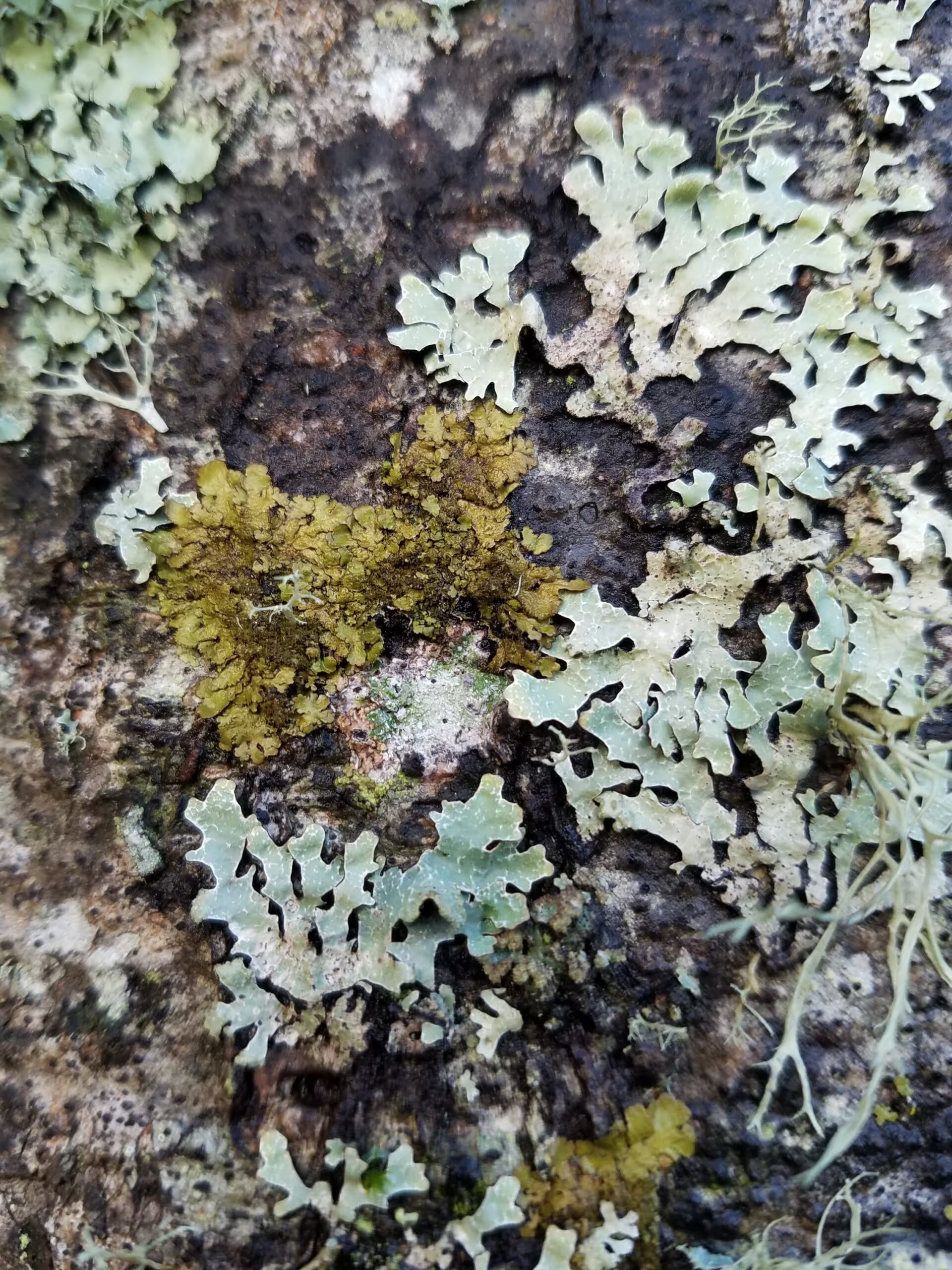I’m Liking the Lichens!



My last blog was about moss and I hope you are now looking at moss differently. When you looked at the moss, did you see other interesting growths? Ever wonder what those are?
I’ll bet you saw lichens. They come in a variety of shapes and colors, but they look quite different from moss. In fact, they grow in at least seven different growth forms: dust, crust, scale, leaf, club, shrub, and hair. When you see one, you’ll often see several forms of lichens, perhaps an orangey-red flat lichen under a clubby lichen. Or a gray white ruffly growth. Amazingly, there are over 1,000 kinds of lichens in the PNW alone.
You’ve certainly seen the tufted or long-hanging yellow-green hair lichens on living and dead trees during your drives or hikes. Perhaps you thought it was bad for the tree, but you’d be wrong. The lichens don’t harm the tree at all.
Plants, including moss, have leaves, stems, and roots. They also have chloroplasts and use photosynthesis to produce their nutrition. On the other hand, lichens have none of those structures. So how does lichen survive throughout the world from deserts to ocean shores, in forests and in diverse elevations and temperatures?
It’s said, “truth is stranger than fiction” and lichens, which are a fungus, are a good example They’re a life form which survives because they have a symbiotic partnership with algae. In other words, both the algae and lichen benefit from living together.
Fungi, including lichens, are not plants. They are in a separate kingdom, Fungi. Plants are in the Plantae kingdom. Fungi don’t have chlorophyll or any method of producing food, therefore they are dependent upon other organisms for nutrition. Fungi often “partner” with plants and trees for nutrients. Many live on decomposing matter which is one of many reasons they are so important in the life cycles of nature. When the partnership is harmful to the host, the relationship is parasitic. Other relationships, helping both the fungi and the host, are symbiotic.

The lichen fungi partners with algae which is in another kingdom, Protista. Therefore, algae differ from plants, fungi, and animals. On their own, green, brown, red, and gold algae easily survive in wet environments including salt and freshwater. However, on their own, they can’t survive in dry environments. But algae survive elsewhere. How is this possible? When the algae partners with lichen in a symbiotic relationship, they can survive almost anywhere.
Therefore, when we see lichen, we’re seeing a partnership between the fungi lichen and the algae. The lichen is dependent upon the algae to use photosynthesis to supply nutrients for them both. The algae are dependent upon the lichen for moisture and minerals and nutrients from the air and rain, allowing it to survive where it normally could not.
Perhaps you’re wondering why this is important…
Lichens (in partnership with algae) don’t get the credit they deserve. They’re an important part of the soil’s nitrogen fixation process. They intercept and hold moisture on trees and shrubs to moderate the humidity and temperature within the forest canopy and they capture and slowly release nutrients from rain, dew, fog, airborne fine particles, and gasses. In the desert, lichens intercept surface runoff and regulate water infiltration into the dry soil. Lichens are also food, shelter and nesting material for many birds and animals.
Let’s be selfish…what do they do for us humans? Throughout history, humans used lichens in many ways including as clothing, dyes, perfume additives, medicines and poisons, bandages and other absorbent materials, food and even tattoo ink!

They also have a special ability to absorb atmospheric pollutants. Scientists study the lichens to check pollution levels of heavy metals, carbon, sulfur, and other pollutants. If you’re interested in lichen biomonitoring, check out http://gis.nacse.org. The growth rate and patterns of lichen also serve as indicators of environmental changes.
And, last but by no means, least… lichens allow algae to thrive throughout the world. The algae produce nutrition for the lichen and itself through the process of photosynthesis. Photosynthesis converts atmospheric carbon dioxide to oxygen. And we need oxygen to live. Thank you, lichens and algae, for the air we breathe Their partnership allows us to live!
When you’re hiking, don’t forget to thank the algae and lichens for our forest and our air.
© Jacqui Austin, February 2021
Touch whale bones, examine shipwreck artifacts and connect with the coast's living history.

Support our mission, get involved in educational programs, or contribute through donations and volunteering.